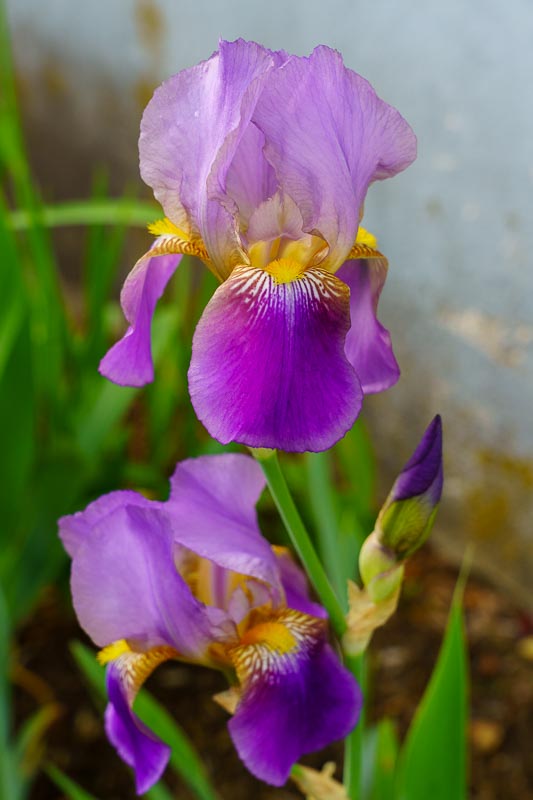Bearded Iris
Common Name:
Bearded Iris
Botanical Name:
Iris germanica
Mature Size:
12-40” tall, 12-24” wide
Sun Exposure:
Full
Soil Type:
Average
Bloom Time:
Spring
Flower Color:
Blue, White, Blue and White, Purple and White, Yellow, Yellow and Maroon
Care:
The most popular of the irises, bearded irises are easy to grow provided you plant them in a sunny site with well-drained soil. A major departure for growing irises compared to other perennials is that they do not like mulch. Mulches (as well as deep planting) encourage the rhizomes to develop rot, so let your soil remain bare. Space plants at least 12 inches apart to prevent the need for frequent dividing.
Soil:
Heavy clay soils do not work well for growing iris, but sandy or gravelly soils are excellent. If your native soil is heavy, you can plant irises in raised beds to help drainage. You may also amend your soil with gypsum or organic matter like compost to lighten the soil.
Water:
Although irises like moisture, they also need good drainage to prevent rot problems. Water them when the top 2 inches of the soil feels dry. These plants have a good tolerance for drought.
Temperature and Humidity:
Irises are notorious for their hardy disposition. They don't mind temperature extremes, as long as the soil allows excess rain or snowmelt to drain away. Irises that are damaged by heavy winds or hail can be susceptible to iris borer larvae.
Fertilizer:
In the spring, apply a low-nitrogen 6-10-10 fertilizer around your irises. Too much nitrogen will encourage foliage at the expense of blooms. Bone meal is also a good fertilizer.
Pruning:
Faded, withered flowers should be pinched off immediately. This may promote additional blooms or even a repeat bloom period later in the season.
Every four or five years, clumps of iris should be dug up, divided, and replanted in order to cull out diseased roots and iris borer damage. This will keep iris plants vigorous and also allow you to propagate new plants.
Overwintering:
Trimming back foliage fans to about 6 inches in the fall makes the garden look tidy, reduces leaf surface area that might host fungal disease, and removes caterpillar eggs. Destroy all foliage that you remove, and do not add it to the compost bin.

